If you want to market towards younger audiences, you’re likely to be looking at marketing towards Generation Z (also known as Gen Z). This generation is made up of those born between 1997 and 2012.
It is vital that when marketing to Gen Z, you create a seamless online shopping and customer experience. Unlike millennials and those that came before, Gen Z was the first generation to grow up fully around technology and the Internet, making them digital natives. They tend to be adept at navigating any eCommerce store, mostly via mobile devices. In fact, almost 1 in 4 young people (22%) within the Gen Z bracket have said that they would be more likely to abandon a retailer whose mobile site doesn’t function well.
We’ve gathered actionable data regarding the preferences of Gen Z that can help eCommerce businesses market successfully to this generation. Keep reading to discover tactics you can implement into your marketing based on this data and download our consumer reports for free to learn more:
The Fresh Relevance Geotargeting Report
The Three Cs of Customer Loyalty
The Retail Social Proof Barometer
Social proof
Social proof is a marketing tactic that relies on the ‘wisdom of the crowd’. Using social proof is vital for eCommerce stores where customers need proof that they can trust your business. Below are a couple of examples that have been proven to best reach Generation Z.
User-Generated Content
One of the ways to reach the new generation is through social media usage – specifically through influencers. From those Gen Zers that actively follow influencers, almost one third (30%) love fashion influencers. The next most liked by Gen Z consumers are beauty influencers (27%) and fitness influencers (25%). Using influencers can be effective as more than one third (35%) of Gen Zers want to see products as they are worn or used by real people instead of photoshopped product images.
Below is an example of an influencer being featured on Colourpop Cosmetics’ social media.
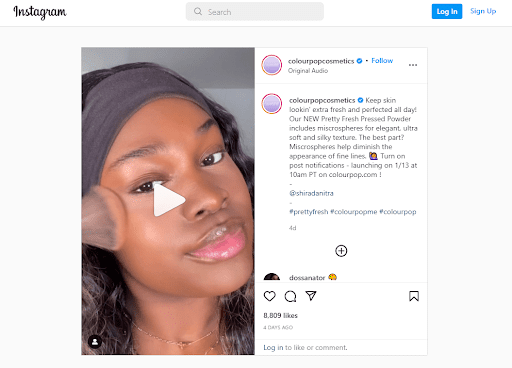
Source: @Colourpopcosmetics on Instagram
However, do be careful that you don’t only focus on large influencers. Allow smaller influencers and non-influencers to post User-Generated Content (UGC) too, as less than one third of Gen Z truly trust product information provided by large influencers. By using non-influencers’ UGC, you can show young consumers what the product looks like in real life, which is what more than 1 in 4 (27%) looks for when shopping online, and still gain their trust.
Glasses Direct share everyday people’s instagram photos with their products within their email marketing.
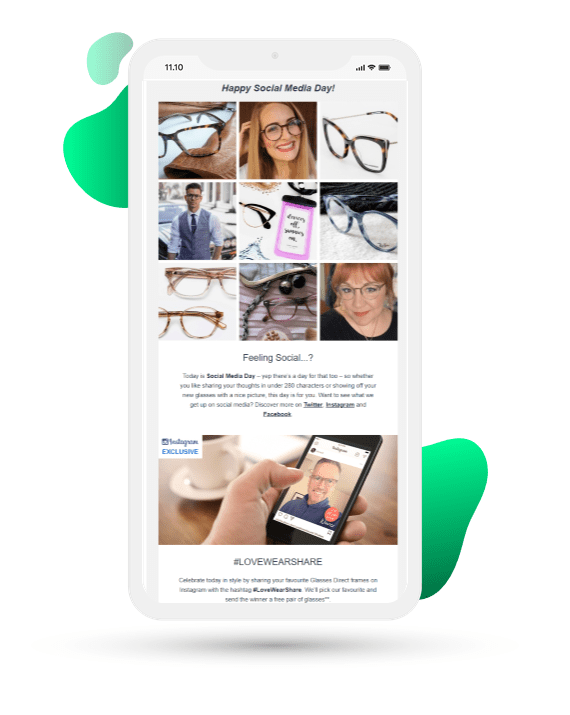
Source: Glasses Direct email
Reviews
Generation Z has high expectations when making purchasing decisions, and over one third (37%) of Gen Zers are distrustful when brands don’t show reviews. This is more distrusting than older generations – Millennials and Baby Boomers both sit between 25-30%.
Two thirds of Gen Zers even consult more than three reviews before buying a product, so make sure that you have ratings and reviews well within your marketing strategies.
Wex Photo Video makes use of star ratings and reviews in the example below.
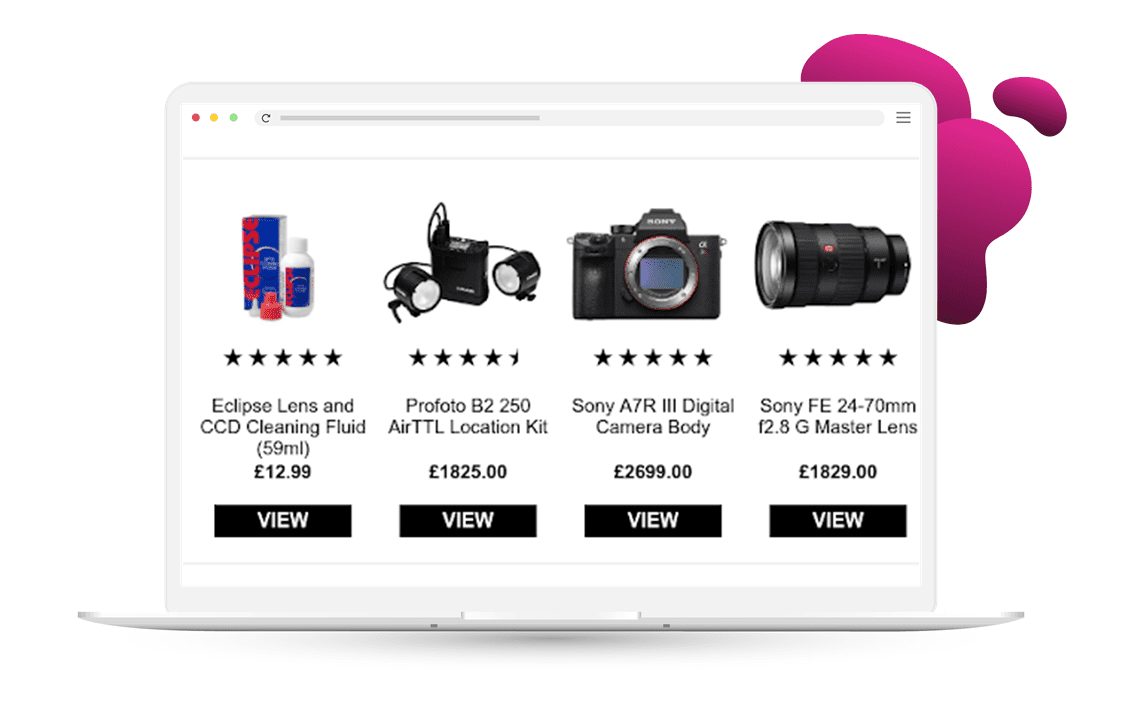
Source: wexphotovideo.com
Geotargeting
If you want to catch Gen Z’s attention, you should create content for your marketing campaigns that is relevant to the younger generation. One way to make sure your marketing campaigns are relevant is by using geotargeting, as explained below.
Relevant product recommendations
When marketing to Gen Z, it is important to know that more than 1 in 3 Gen Z consumers (35%) want online retailers to show them product recommendations for products that are appropriate for the weather in their current location. For example, a Gen Zer in sunny LA is going to want different recommendations to a consumer in rainy New York. By adjusting recommendations to suit this younger generation’s needs, they are more likely to convert.
Another detail over 1 in 4 (29%) of the younger generation want you to base recommendations on is products that are available in the consumer’s closest store.
Store locations
Did you know that over 1 in 3 Gen Z consumers (39%) have expressed that they are more likely to make a purchase from a retailer that offers the option for click and collect? Use geo-location within your online marketing strategy and set it up so that customers can order online but collect in person to satisfy this generation.
Pavers allows customers to find their closest brick-and-mortar store and its opening hours.
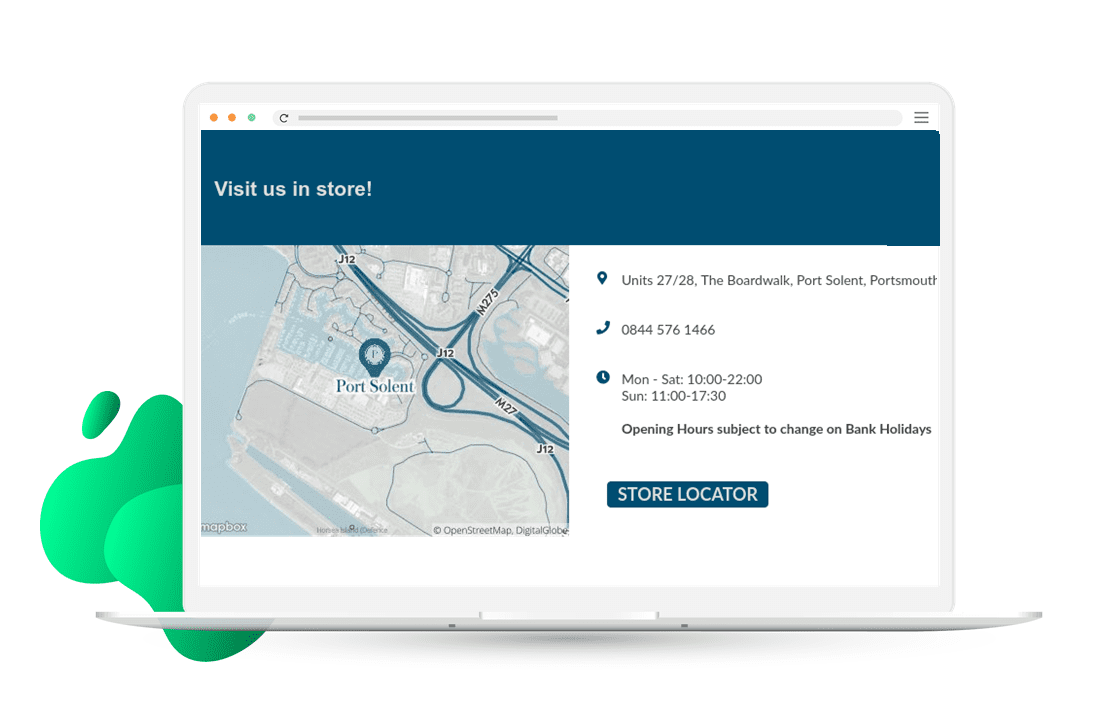
Source: Pavers.co.uk
You can also mix your digital marketing strategies with traditional marketing methods by giving customers the option to try products in-store and delivering them to customers’ homes. Almost half of Gen Z customers (40%) are more likely to make purchases if this is the case.
But what do you do if Gen Z isn’t coming into the brick-and-mortar store at all? Almost 1 in 3 (31%) of consumers in the Generation Z age bracket want online retailers to offer personalized incentives to shop in-store. You can send them personalized coupons to spend in-store on their favorite product category, for example.
Triggered emails
Triggered emails are an essential tactic to include in your Gen Z digital marketing strategy. They are emails that are automatically sent to customers when they exhibit a certain behavior, or when, for example, something comes back in stock.
Do be careful when sending many emails, though, as more than 1 in 4 (27%) of Gen Zers are frustrated with daily emails that have irrelevant information.
Also be sure that any links are dynamic, so that when an offer runs out before the email is opened, it says so. After all, almost 1 in 4 (27%) of Gen Zers are frustrated with offers that are no longer available.
Post-purchase emails
1 in 4 Gen Zers want personalized post-purchase guides, and over 1 in 4 (26%) get frustrated when having to wait for their order to arrive. As part of your Gen Z marketing strategy, you could send personalized automated emails after a customer has bought any products from you. This email could include complementary product recommendations, how to take care of the product(s) and information about shipping to ease any anxiety about delivery.
In the example below, Allbirds gives customers who have just purchased information about their purchase and shipping.
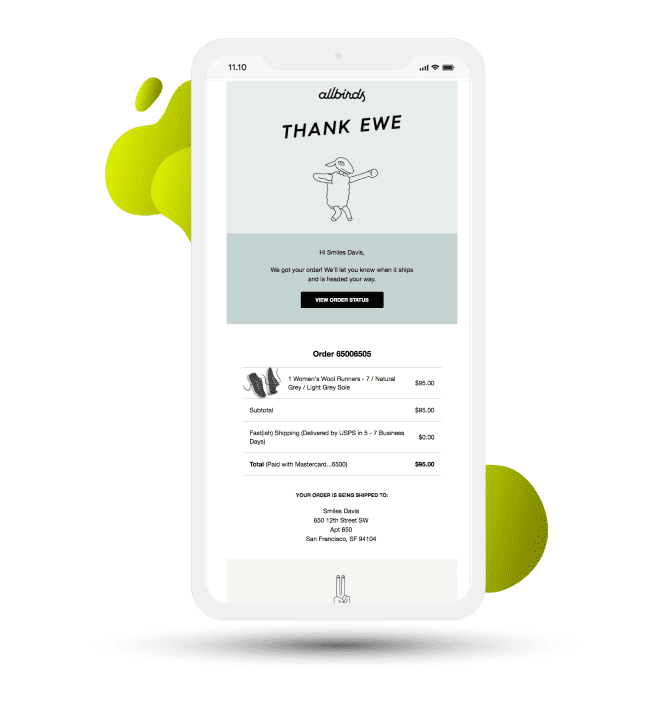
Source: Allbirds email
Replenishment emails
If a Generation Z customer has become a lapsed customer, it could be that they have forgotten to replenish their products from you. 1 in 4 Gen Z customers want replenishment emails to remind them to buy from you, which works especially well with make-up and skincare brands, amongst others.
Viovet sends emails to remind customers to replenish their usual products bought for their pets.
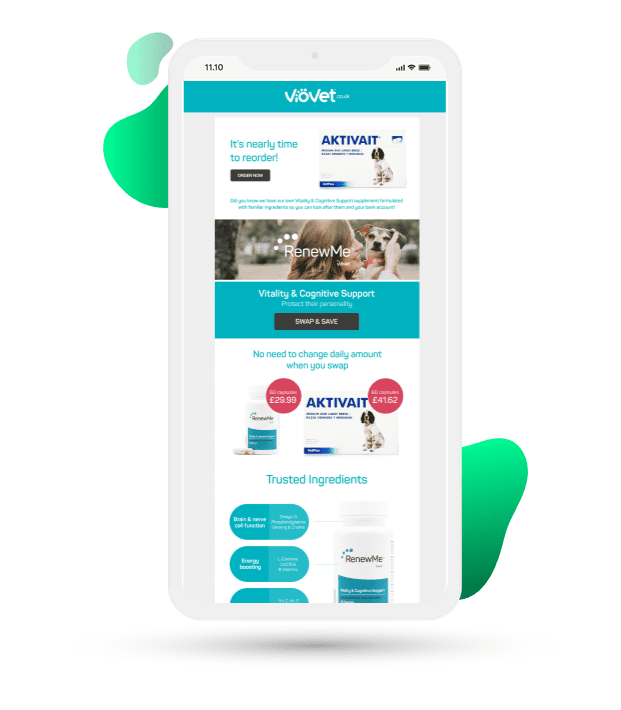
Source: Viovet email
Loyalty Programs
Generation Z have more expectations than other generations when it comes to brand loyalty and receiving rewards in return. For example, almost half (44%) want to see spending thresholds that unlock incentives highlighted. Research by Antavo found that companies that included tiers in their loyalty program achieve a 1.8X higher ROI compared to those not offering tiers, making this a tactic worth trying.
You can also offer early access to sales and limited editions within your Generation Z marketing strategy, as over 1 in 4 younger people (28%) expect this in return for personal data and brand loyalty.
Taco Bell sends emails to remind customers how many loyalty points they have earned.
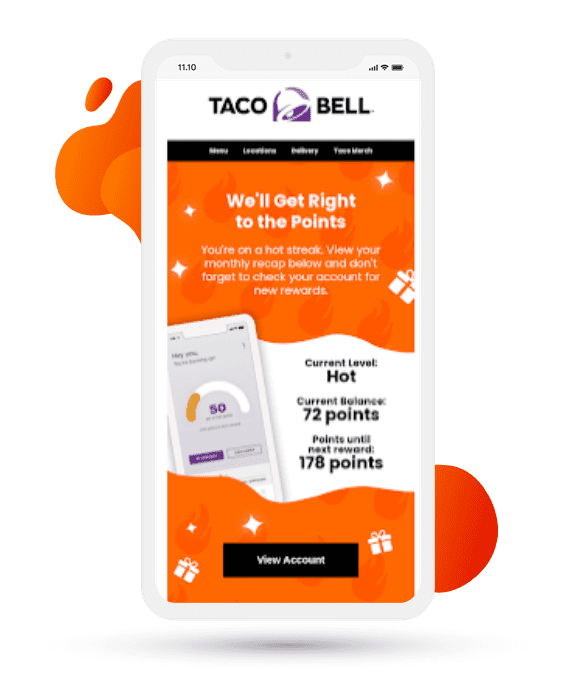
Source: Taco Bell email
Final thoughts
Gen Z is an important market to target if you want to make the most out of your business. By using social proof such as UGC and star ratings you can show you are trustworthy. Make things easier for them using geo-location in your emails and website. Finally, send relevant triggered emails to remind them of your existence and encourage them to convert.
All of the above marketing tactics to reach Generation Z are achievable through the Fresh Relevance platform. Book a demo with us today to find out more.
Disclaimer:
This blog post is for informational purposes only. Fresh Relevance is not claiming to provide its services to the companies and brand owners referred to in the blog post.







